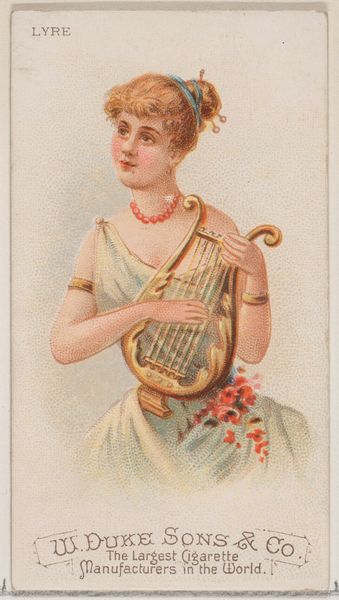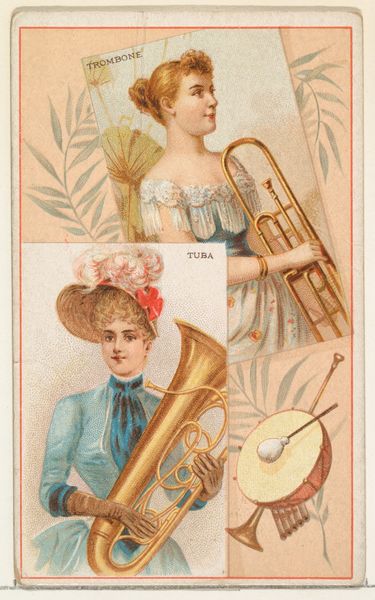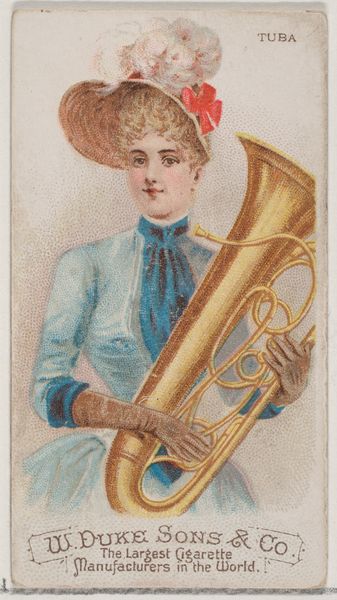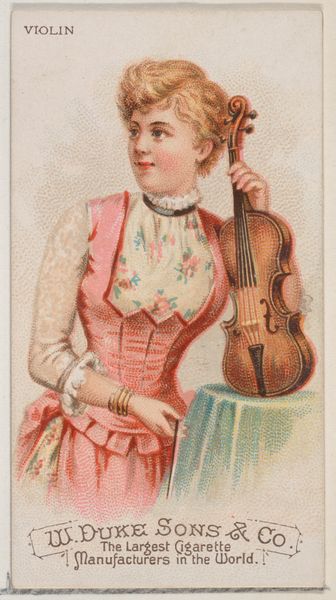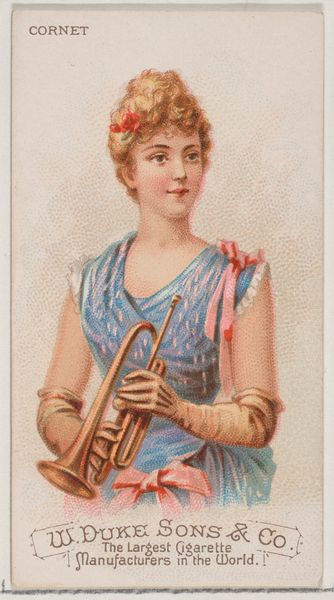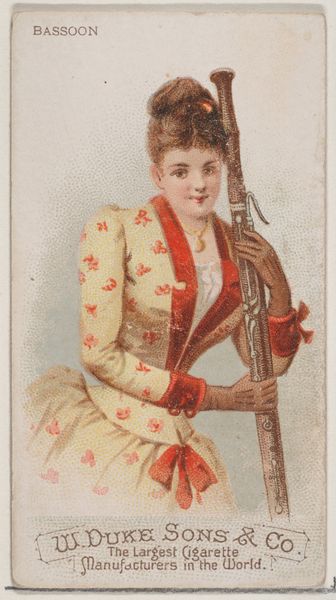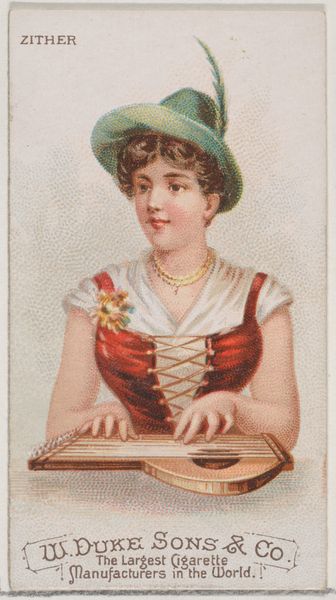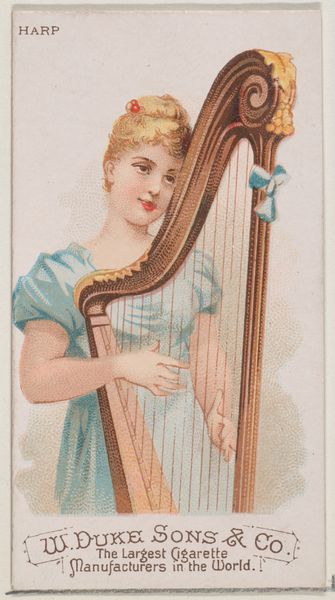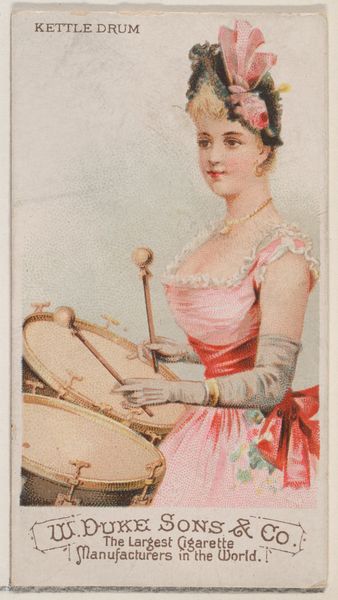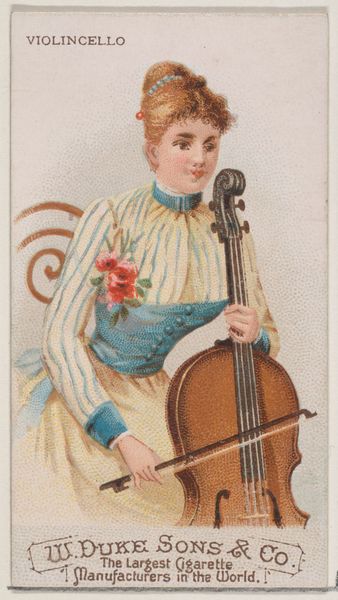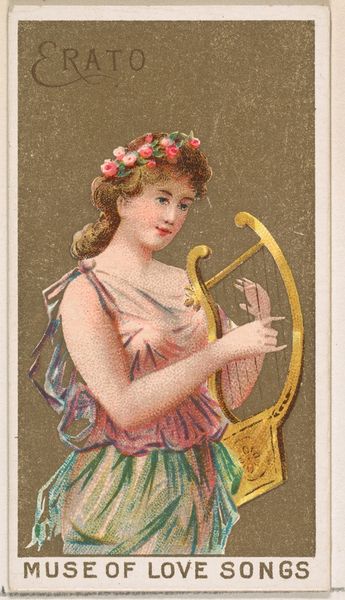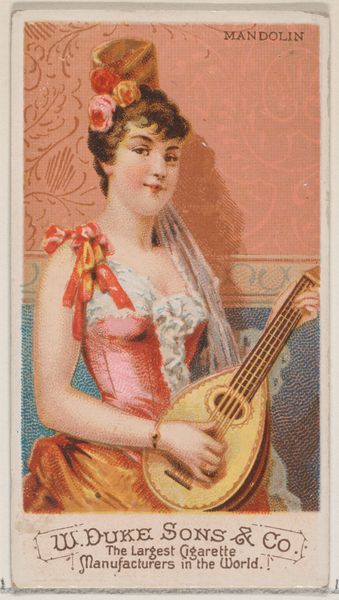
Trombone, from the Musical Instruments series (N82) for Duke brand cigarettes 1888
0:00
0:00
drawing, collage, lithograph, print
#
portrait
#
drawing
#
woman
#
collage
#
lithograph
# print
#
coloured pencil
#
musical-instrument
Dimensions: Sheet: 2 3/4 x 1 1/2 in. (7 x 3.8 cm)
Copyright: Public Domain
Curator: Looking at this chromolithograph from 1888, "Trombone" from the Musical Instruments series, part of a promotional set by W. Duke, Sons & Co. cigarette manufacturers, I see a potent blend of feminine beauty and musical power. Editor: It’s captivating, isn’t it? The way the artist presents the woman seems to prioritize elegance, even a fragile grace, that contrasts with the boldness of the trombone itself. Curator: Precisely. Note how the woman doesn't just hold the instrument; she *presents* it. It is posed very deliberately, a signal, perhaps of both access and availability, the way objects often perform symbolic weight lifting, echoing historical power structures. Editor: Absolutely. Let's think about the materials: lithography, likely mass-produced for these cigarette cards. Consider the social context: What did it mean for "W. Duke Sons & Co., The Largest Cigarette Manufacturers in the World!" to circulate this imagery, of a woman with a wind instrument? Curator: It's fascinating. This conflation of industry and art creates its own symbolism, doesn't it? On the one hand, she symbolizes the muse, traditionally holding court in art. Editor: Yet her portrayal has been manufactured and dispersed through the machinery of cigarette advertising. There’s a tension in her form too, isn’t there? Curator: A delicious tension! We interpret her identity through those signifiers. This work reflects the broader cultural moment, where tobacco was being heavily promoted as part of a new lifestyle. Editor: Indeed, and this image offered a very specific *kind* of aspirational consumption to male smokers. There's that idealized vision of beauty linked directly to purchasing power and commodity culture. The instrument itself signifies not merely music, but aspiration toward elegance and worldly appreciation. Curator: So true! The presence of roses could reflect romance, or female virtue more broadly... What is truly curious to me is what happens when mass consumption begins shaping symbolic meaning making! Editor: Well, seeing this advertisement, I keep returning to what gets lost when art serves commerce, when beauty is commodified in service of profit, the very making of it all shaped by capital’s demands. Curator: Yes, it's a complex intersection! We have an accessible work, due to lithography and the popular nature of a tobacco advertising card, with enduring power and imagery. Editor: Well said, a collision of grace and capital.
Comments
No comments
Be the first to comment and join the conversation on the ultimate creative platform.
